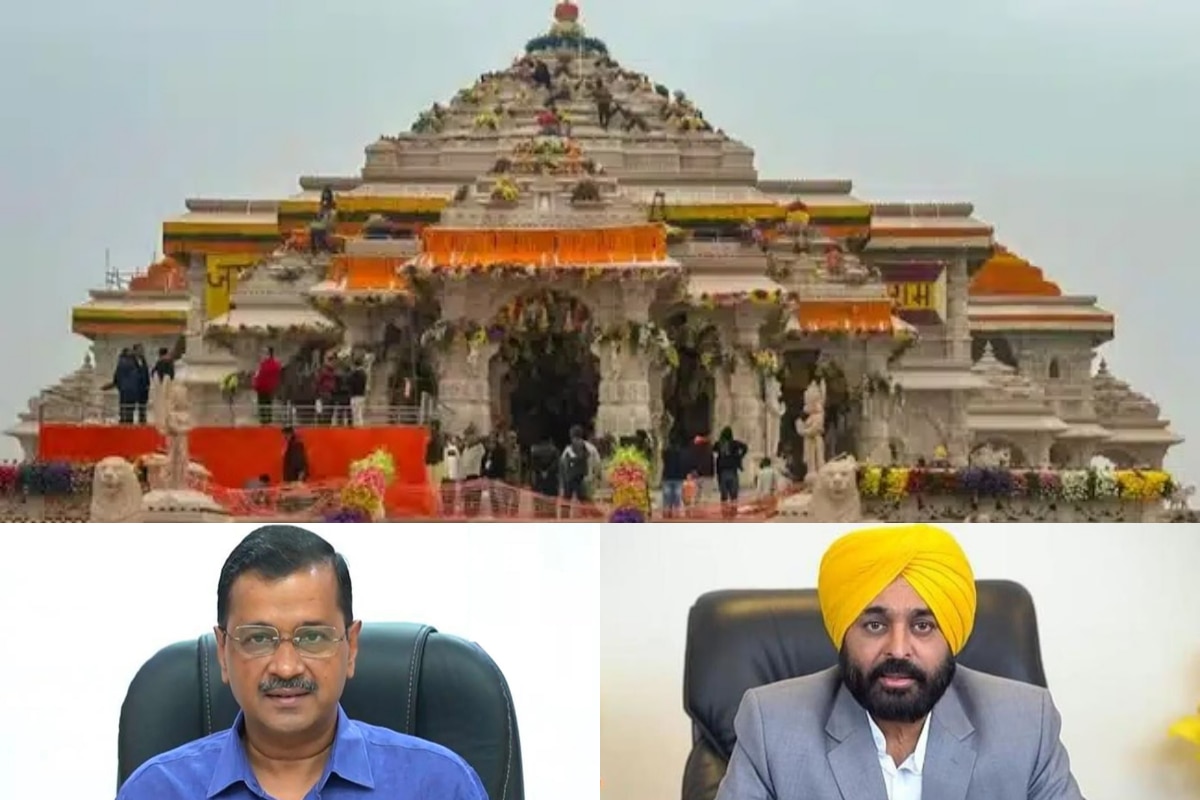The Ram Mandir Pran Pratishtha in the newly built Shri Ram Janmbhoomi Mandir in Ayodhya was held on January 22.
Arvind Kejriwal, Bhagwant Mann Ayodhya Visit: Following the Pran Pratishtha ceremony of Shri Ram Lalla at the newly constructed Ram Temple in Ayodhya on 22 January, Delhi Chief Minister and Aam Aadmi Party (AAP) convenor Arvind Kejriwal and Punjab Chief Minister Bhagwant Mann will visit the Ram Temple in Ayodhya on Monday along with their families.
Earlier in January, before, during, and after the consecration ceremony, Kejriwal said his preference was to visit the temple later with his parents, wife, and children.
“I want to visit Ayodhya with my family. My parents are very keen to visit the Ram Temple, so we’ll go someday after January 22,” he had said.
The Ram Mandir Pran Pratishtha in the newly built Shri Ram Janmbhoomi Mandir in Ayodhya was held on January 22, led by rituals that were performed by Prime Minister Narendra Modi.
The ceremonial journey leading up to the Pran Pratishtha included a seven-day ritual that commenced on January 16, 2024.
The ceremony was attended by representatives of all major spiritual and religious sects in the country. People from all walks of life, including representatives of various tribal communities, will also attend the ceremony.
The magnificent Shri Ram Janmbhoomi Mandir is constructed in traditional Nagara style. Its length (east-west) is 380 feet; width 250 feet and height is 161 feet; and is supported by a total of 392 pillars and 44 doors. The pillars and walls of the temple showcase intricately sculpted depictions of Hindu deities, gods, and goddesses. In the main sanctum sanctorum on the ground floor, the childhood form of Bhagwan Shri Ram (the idol of Shri Ramlalla) has been placed.
The main entrance to the Mandir is situated on the eastern side, which can be approached by ascending 32 stairs through the Singh Dwar. There are a total of five Mandaps (Halls) in the Mandir – Nritya Mandap, Rang Mandap, Sabha Mandap, Prathana Mandap and Kirtan Mandap. Near the Mandir is a historic Well (Sita koop), dating back to the ancient era. In the southwestern part of the Mandir complex, at Kuber Tila, the ancient Mandir of Bhagwan Shiv has been restored, along with the installation of a statue of Jatayu.
The foundation of the Mandir has been constructed with a 14-meter-thick layer of roller-compacted concrete (RCC), giving it the appearance of artificial rock. No iron is used anywhere in the Mandir. For protection against ground moisture, a 21-foot-high plinth has been constructed using granite. The Mandir complex has a sewage treatment plant, water treatment plant, water supply for fire safety, and an independent power station. The Mandir has been constructed employing the country’s traditional and indigenous technology.
The pillars and walls of the temple showcase intricately sculpted depictions of Hindu deities, Gods, and Goddesses. In the main sanctum sanctorum on the ground floor, the childhood form of Bhagwan Shri Ram (the idol of Shri Ramlalla) has been placed.
A team of priests led by Lakshmikant Dixit performed the main rituals of the Pran Prathistha. The idol of Lord Ram was placed at its position at the “Garbh Griha” (sanctum sanctorum) of the temple on January 18. The muhurat was decided by Ganeshwar Shastri Dravid of Varanasi.

